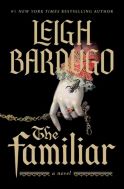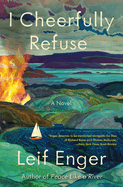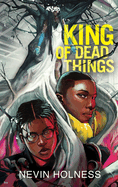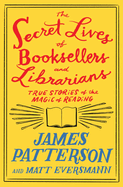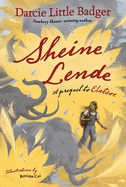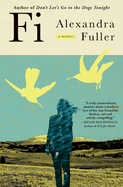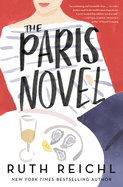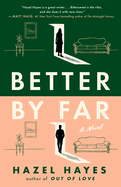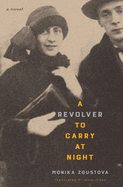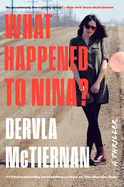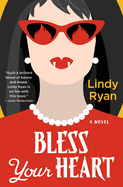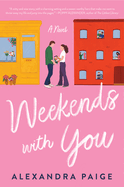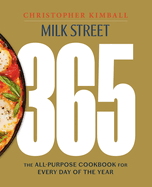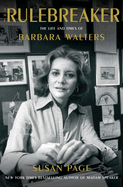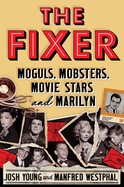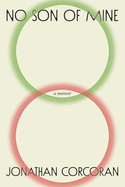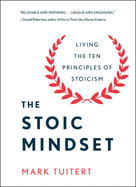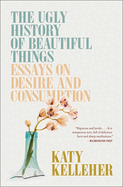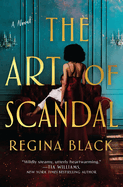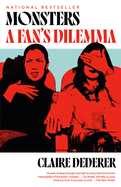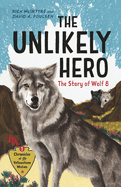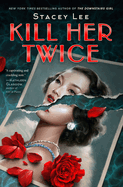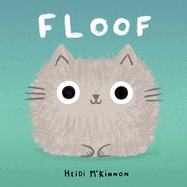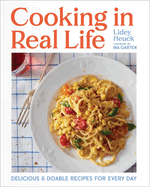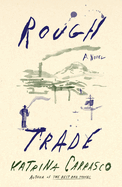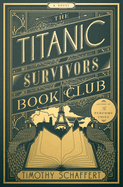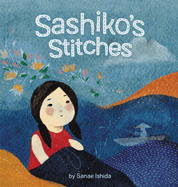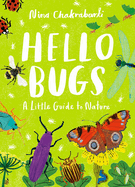Friday, April 26, 2024
Tomorrow is the last Saturday in April, and that means it's Independent Bookstore Day! Indies all over the U.S. are hosting authors, holding special events and contests, and offering exclusive merch. So, while you're out partying with your favorite booksellers, be sure to look for exciting new releases like The Familiar by "fantasy powerhouse" Leigh Bardugo, which delves into "small magics" and a "courtly web of intrigue" set during the Spanish Golden Age; and I Cheerfully Refuse, a near-future "dystopian novel of hope, community, and love" by Leif Enger, whose hero's "optimism is rooted in an appreciation of beauty and joy." Plus, King of Dead Things by Nevin Holness follows four teens on "an outstanding, fast-paced adventure" through a London steeped in Afro-Caribbean mythology.
Meanwhile, in The Writer's Life, Darcie Little Badger elaborates on the ghost stories and real-world history that influenced her while writing the 1970s "Weird Texas" in Sheine Lende: A Prequel to Elatsoe.
I Cheerfully Refuse
by Leif Enger
Heartbreaking and terrifying, Leif Enger's I Cheerfully Refuse is a dystopian novel of hope, community, and love. Enger (Peace Like a River, Virgil Wander) constructs an equally complex plot and protagonist in a near-future setting where "the End [is] on everyone's mind." But as Rainy travels around Lake Superior, Enger balances despair with characters who are committed to overcoming evil with good.
Part-time musician Rainy lives on Lake Superior's Minnesota shore with his beloved wife, Lark, the owner of a bookshop "targeted as the merry purveyor of rebellion it unquestionably was." The nation's president is "proudly illiterate"; a warming Lake Superior yields decades-old corpses; infrastructure is crumbling; and those "in search of better" embrace the fatal "Conclusion" drug called Willow. When an act of kindness leads to tragedy, the bereft Rainy launches his antique sailboat on a quest for the spirit of his lost love. Rainy perseveres, escaping threats from both nature and man until his kindhearted decision to harbor nine-year-old Sol--seeking protection from other men, who have murky motivations--places him in deeper danger.
Radical and nefarious characters pursue Rainy's rickety craft, but often-humorous dialogue in the face of this too-credible saga of lawlessness relieves the lurking terror. "Rubicons get crossed for all kinds of petty reasons," Rainy muses as he gambles on a route through a storm. His optimism is rooted in an appreciation of beauty and joy--demonstrated in his descriptions of his deck "embellished with gulls," memories of being "aspiring quixotes" with Lark--assuring readers of hope for salvation for the novel's apocalyptic world. --Cheryl McKeon, Book House of Stuyvesant Plaza, Albany, N.Y.
Discover: Set on Minnesota's Lake Superior, I Cheerfully Refuse is a novel of a near-future United States that's terrifyingly dystopian yet whimsically hopeful.
The Paris Novel
by Ruth Reichl
Ruth Reichl's second novel is a touching story of how a woman who suffered childhood abuse and neglect finds home and purpose. The Paris Novel is also a love letter to a world city.
In 1983, Stella, a New York City copy editor in her early 30s, seems strangely untroubled by the news of her estranged mother's sudden death. Then again, Celia St. Vincent was cold and aloof. She was a self-made woman who never told Stella anything about her father, but had a string of boyfriends that came and went, including one who molested seven-year-old Stella.
Celia's sparse will leaves Stella $8,000, with instructions to go to Paris. Reluctantly, Stella complies. As in a fairy tale, the stars align wherever Stella goes. At Les Deux Magots, she meets Jules Delatour, an elderly art collector who becomes her friend and patron. A similar father figure is George Whitman of Shakespeare and Company, who takes her under his wing. Now a "Tumbleweed," she stays at the English-language bookshop in exchange for occasional work.
Reichl (Delicious!) crafts a cozy atmosphere full of lavish meals--escargots, foie gras, ortolans, and fine wines--as Jules educates Stella in classic French cuisine. She learns to take joy in art, fashion, and food. She also embarks on a quest to locate her father, allegedly an impetuous chef Celia met on a trip to Paris. The outcome is in keeping with the novel's wish-fulfillment mode. Happy coincidences can be forgiven; think of it as the universe making up for Stella's traumatic past.
Francophiles and armchair travelers alike will relish the chance to tour Paris's famous churches, museums, and restaurants. --Rebecca Foster, freelance reviewer, proofreader and blogger at Bookish Beck
Discover: Reichl's second novel, an appealing modern fairy tale stuffed full of beautiful art and gourmet food, features a wronged young woman undertaking a Parisian odyssey to find a family and a vocation.
Better by Far
by Hazel Hayes
Humor and heartbreak are a powerful combination, one that Irish writer and director Hazel Hayes (Out of Love) deftly delivers in Better by Far, a novel about love, loss, and breakups. Hayes creatively adds a fascinating layer: a thread of horror that transforms the otherwise realistic plot into a genre-defying read.
When writer Kate and musician Finn break up, they continue sharing a house, staying with friends and family on alternating weeks to avoid seeing each other. Kate unravels as the end of the relationship triggers grief over the death of her mother when Kate was nine years old. That grief escalates into surreal sequences that blend dream and hallucination into increasingly unnerving territory.
The novel's prose is in second person, framed like a letter from Kate addressed to Finn. This intimate perspective adds artful personality to clear, engrossing scenes and a wide cast of quirky, lovable characters. It's funny and self-aware, often hinting at breaking the fourth wall, as when Kate quotes Ernest Hemingway before cutting to a scene where the new boss at Kate's literary agency tells her not to quote Hemingway in her in-progress book because "it's pretentious."
Beneath all the quips, Hayes casually exposes real human truth in gorgeous lines such as, "After all, a body can exist in the next room, but absence fills a whole house." There's feeling in every moment and line of Better by Far, whether it's the crushing weight of loss or the monumental power of small, kind acts. The second-person form achieves extra resonance, enabling a powerful ending that will leave readers both devastated and renewed. --Carol Caley, writer
Discover: Irish writer and director Hazel Hayes delivers humor and heartbreak in a genre-defying novel of love and grief that will leave readers devastated and renewed.
A Revolver to Carry at Night
by Monika Zgustova, transl. by Julie Jones
With A Revolver to Carry at Night, Monika Zgustova (Dressed for a Dance in the Snow) examines the life of a fictionalized Véra Nabokov, necessarily in relation to the famous husband whose career she helped shape. Zgustova offers snippets of the lives of Véra and Vladimir, including both mundane and life-changing moments, alongside their son, Dmitri; Vladimir's one-time lover Irina Guadanini; and the Nabokovs' friend Filippa Rolf. Translated from the Spanish by Julie Jones, this brief but absorbing novel is both terse and expressive.
The novel consists of four parts, set in 1977 Montreux; 1937 Cannes; 1964 Boston and New York; and finally Montreux in 1990, following Vladimir Nabokov's death. These nonchronological sections allow for various perspectives on the same events, like the couple's first meeting. In Zgustova's telling, Véra orchestrated the relationship and the marriage from the start. A Revolver to Carry at Night is told in a close third-person narrative, shifting perspective among Véra, Vladimir, and others, allowing readers to become engrossed in the various characters' thoughts and feelings.
Véra is ambitious, complex, controlling, and not necessarily likable. In the absence of her own creative career, she privately takes credit for her contributions to Vladimir's. The titular revolver is a literal object Véra carries as well as a symbol of her insecurity and tough exterior.
Based on events from the Nabokovs' real lives, A Revolver to Carry at Night offers insight as well as imagination into the life of a strong woman who fought for what she wanted. It is not always flattering, but its subject would appreciate the hard-nosed lack of sentimentality. --Julia Kastner, librarian and blogger at pagesofjulia
Discover: This slim, immersive novel cleverly examines the interior experiences of Véra Nabokov as she supports her famous husband's literary career.
The Prophet and the Idiot
by Jonas Jonasson, transl. by Rachel Willson-Broyles
In The Prophet and the Idiot, Swedish author Jonas Jonasson (Sweet Sweet Revenge Ltd) applies his singular humor and empathy to a cast of misfits. Amateur astrophysicist Petra has worked out that the world is coming to an end in September 2011, but no one heeds her warnings--until she encounters Johan, a culinary savant who is "slow of thought" and has recently been manipulated out of a fortune by his brother, Fredrik. Petra has been ill-treated, too, and together she and Johan set out to use their final days on Earth to redress old grievances and seize missed opportunities before it's too late.
Their efforts quickly go awry, and soon they're fleeing Sweden with the assistance of a violet-haired septuagenarian named Agnes, whose lucrative online travel influencer persona is about blow up in her face. A rollicking world tour takes the trio to Germany, Italy, Ethiopia, Tanzania, and the United States.
Along the way, they encounter U.S. President Barack Obama, Secretary-General Ban Ki-moon of the United Nations, corrupt Russian officials on the run from the mafia, and the rulers of a remote (and fictional) island nation. They dabble in international diplomacy, banking fraud, Ponzi schemes, and election tampering--all mostly in the interest of the public good.
The novel is enhanced by elaborate descriptions of the delicious menus and wine pairings Johan creates as he travels from country to country, educating chefs and proselytizing the virtues of the delectable Swedish Västerbotten cheese. The Prophet and the Idiot will be enjoyed by readers of light, warmhearted, humorous fiction. --Elizabeth DeNoma, executive editor, DeNoma Literary Services, Seattle, Wash.
Discover: The Prophet and the Idiot is a rollicking adventure filled with quirky characters and elaborate culinary descriptions.
Mystery & Thriller
What Happened to Nina?
by Dervla McTiernan
The fate of 20-year-old college student Nina Fraser propels the enthralling What Happened to Nina? as Australian author Dervla McTiernan's fifth novel explores parental love and obsession, toxic social media, and entitlement.
The novel opens with Nina recounting her life until this point. She reveals her relationship with Simon Jordan, her boyfriend since she was 16, as well as his controlling nature, and explains why she didn't end their abusive relationship sooner.
What happened to Nina becomes the driving question when Simon returns home alone after he and Nina go rock climbing on his wealthy family's massive vacation property in Vermont. Simon claims he left Nina at the cabin after they broke up because she was cheating on him. Nina's parents, Leanne and Andy, report their daughter missing, but the police don't believe Simon's explanation. His parents, Rory and Jamie, close ranks, hiring a manipulative public relations firm to discredit the Frasers and depict Simon as a caring person who was in love with an unstable Nina. True-crime aficionados use social media to make it seem like the Frasers are responsible for Nina's disappearance, accusations aided by the distraught Leanne's erratic behavior.
McTiernan (The Murder Rule) shows the families' devastation and illustrates how far parents will go for their children, even when they know their child isn't a good person, in this painfully fascinating thriller. --Oline H. Cogdill, freelance reviewer
Discover: Two families grapple with the devastation of loss when suspicion centers on the wealthy boyfriend of a missing college student in this fascinating thriller.
Bless Your Heart
by Lindy Ryan
The truth never stays buried for four generations of strong, southeast Texas women in Bless Your Heart, a quirky, dark, and wildly exciting novel by Lindy Ryan (Into the Forest: Tales of the Baba Yaga), who also writes romance as Lindy Miller.
In the summer of 1999, action buzzes around the Evans Funeral Parlor, run by 80-year-old widowed matriarch Ducey Evans; her prim and prissy daughter, Lenore; Lenore's meticulous, soft-spoken daughter, Grace; and Grace's teenage daughter, Luna.
After an upstanding local woman dies and the Evans crew prepares her body for burial, the dead gal sits up in her casket and rips out the stitches Ducey "had sewn in to keep her mouth closed." Things grow even spookier when the deputy sheriff drags in the mutilated corpse of another local, who bears strange bite marks on his neck. When this corpse also rises from the dead, Ducey and Lenore recognize the telltale signs of the strigoi. It's been 15 years since Ducey and Lenore experienced the evil, vampire-like spirits who revive after death and whose victims do as well. Now that the strigoi seem to be back, the bighearted Evans family must revisit the past to figure out why they've returned and work together to fight off the bloodsucking demons before they wreak even more havoc.
Snappy characters and dialogue, along with brisk pacing, infuse Ryan's charmingly suspenseful, heart-pounding--at times gruesome--storytelling. Bless Your Heart will hold strong crossover appeal for readers of cozy mysteries, horror, and domestic fiction. --Kathleen Gerard, blogger at Reading Between the Lines
Discover: A family of women running a Texas funeral home combat vampire-like evil spirits in this quirky, heart-pounding horror-mystery novel.
Science Fiction & Fantasy
The Familiar
by Leigh Bardugo
Leigh Bardugo (Six of Crows, Ninth House) is a reliable fantasy powerhouse. Her adult historic fantasy The Familiar is set in the Spanish Golden Age, and follows the willful and lovable Luzia Cotado, a lowly scullion, who uses small magics to get by, such as fixing burned bread and lightening heavy loads to be carried. When the status-hungry mistress of the house discovers Luzia's powers, she sets out to exploit them for her own gain.
The world of The Familiar is satisfyingly detailed and all too easy to disappear into as Bardugo sets the silky glamor of aristocracy against the brutality of the Spanish Inquisition. Luzia is pulled into a tournament, competing to become the king of Spain's holy champion. But as she seeks to improve her circumstance, she enters a courtly web of intrigue more dangerous than she could have imagined.
The novel's magic system is both intuitive and deeply imagined, blooming as Luzia discovers that she's capable of more than anyone ever suspected. The romance is tortured and irresistible. As in much of Bardugo's work, the vibrant cast of characters makes the story gripping. She writes with a knack for emotional description that brings each of them to life; even a loutish guard shows a touch of humanity as he pines over unrequited love.
With a twisty plot and vivid worldbuilding, The Familiar is another compelling and transporting hit from an author who can be trusted to supply lovers of fantasy with the good stuff. --Carol Caley, writer
Discover: Leigh Bardugo's The Familiar is a magically good fantasy that draws readers into the Spanish Golden Age, where a young scullion competes to be the king's champion.
Romance
Weekends with You
by Alexandra Paige
Alexandra Paige's debut novel, Weekends with You, follows American expatriate Lucy Bernstein as she moves into a converted warehouse apartment in London. In the captivating adventures she shares with her seven flatmates, she participates in riveting activities, forms unbreakable bonds, and explores new love--platonic and romantic.
When Lucy has to move out of her studio apartment in London, her college roommate, Raja, invites her to move into a newly available room at her converted warehouse apartment. Raja assures her friend that her six flatmates will welcome Lucy with open arms, but Lucy is still anxious. However, all of Lucy's worries disappear when she meets Henry Baker, a flatmate she finds particularly handsome.
Henry is only in town once a month due to his job as a traveling music photographer, so Lucy knows her limited time with him is valuable. However, her budding feelings are complicated by the stress of his fleeting visits and her job at the Lotus, a struggling flower shop. Lucy longs to keep the shop running and to get closer to Henry, and eventually she must decide how much of her heart to put on the line for the Lotus and Henry.
Weekends with You is told through monthly installments over the course of an enthralling year, and its charming ensemble of characters quickly becomes Lucy's support system, her home away from home. As Lucy realizes the importance of platonic love, her romance with Henry blooms quickly but must grow beyond miscommunication and missteps. The flatmates' warehouse weekends create a heartwarming narrative about found family, new love, and the search for true belonging. --Clara Newton, freelance reviewer
Discover: Weekends with You follows Lucy and her seven roommates in a novel overflowing with hopeful romance, heartfelt platonic love, and the search for true belonging.
Food & Wine
Milk Street 365: The All-Purpose Cookbook for Every Day of the Year
by Christopher Kimball
Christopher Kimball's Milk Street 365 is an impressive volume that will easily become the go-to recipe trove in many households, thanks to its ability to cater to a wide range of tastes, skill levels, appetites, and dietary requirements. Kimball (Milk Street: Tuesday Nights) divides the cookbook into 18 sections that contain offerings from cuisines all over the world. While this may seem overwhelming, every section begins with a list of all the recipes included, an organization system that essentially embeds more user-friendly indices throughout the book and makes the large volume of meal options both approachable and navigable. The book's design maximizes space, filling each page while managing to ensure that every recipe is accompanied by a photograph of the dish. Highlighted sections called "Change the Way You Cook" and "Milk Street Basic" outline master techniques such as knife skills and poaching eggs, provide quantity conversions for canned and dry beans, and explain the science behind how shredding root vegetables enhances their flavor. Many recipes include substitutions for hard-to-find ingredients--no one needs a special pantry to navigate this cookbook and get the most out of it.
Fans of enduring kitchen masterworks such as Joy of Cooking or Mastering the Art of French Cooking will welcome Milk Street 365 to their collections. Cooks who are just getting started will appreciate the book's accessible and user-friendly presentation and layering of techniques, recipes, and photos. It's the kind of book that will encourage everyone to get back into the kitchen to expand their horizons. --Michelle Anya Anjirbag, freelance reviewer
Discover: Christopher Kimball's Milk Street rolls out a thorough and accessible cookbook that will quickly become a valued household resource for what to eat and how to make it.
Biography & Memoir
The Secret Lives of Booksellers and Librarians: Their Stories Are Better Than the Bestsellers
by James Patterson and Matt Eversmann
Of all the dreams in the world, becoming a librarian or bookseller is one of the most common. But what is it about these professions that maintains a hold over communities and the imaginations of individual readers? In The Secret Lives of Booksellers and Librarians, coauthors James Patterson and Matt Eversmann take booklovers into the minds of the people across the United States who give their lives to books--not by writing or producing them, but by putting books into readers' hands (though Judy Blume gives a fascinating look at her transition from beloved author to bookseller).
These librarians and booksellers recount what made them choose their careers, as well as the myriad challenges they face, including book bans, store closings, and the preservation of community lifelines in the face of natural disasters and global pandemics. They provide readers with glimpses into their communities and their schools, and even into places readers might not realize these professionals can be found, such as the jails on Rikers Island in New York City.
They detail why doing the work to connect communities with books that reflect their lives matters beyond the individual reader. Everywhere they are, these librarians and booksellers connect with readers who find themselves in books, for whom the right book might make all the difference. The Secret Lives of Booksellers and Librarians proves that it is not only the spaces of libraries and bookstores that are important but also the people who fill them with the intention of building bigger, wider, and more connected communities. --Michelle Anya Anjirbag, freelance reviewer
Discover: Librarians and booksellers recount why they do what they do, and James Patterson and Matt Eversmann bring their hopes and dreams straight into readers' hands.
Fi: A Memoir of My Son
by Alexandra Fuller
Alexandra Fuller's eighth book, the bereavement memoir Fi, poignantly reckons with the sudden death of Fuller's 21-year-old son and depicts its practical and spiritual aftermath.
Fuller's son, Fuller Ross, whose nickname was "Fi," died in his sleep in July 2018. He had a history of seizures, but Fuller never learned the cause of his death because she refused to read his autopsy report. Fi focuses on the eight months that followed, a period of concentrated, even ritualized mourning during which Fuller moved into a sheep wagon (a shelter used by shepherds, outfitted with a bed, a table and a wood-burning stove) in the mountains of Wyoming. Fuller found rigid routines and magical thinking equally valuable. She filled her days with scheduled hours of meditation and writing, but she also sought supernatural signs in nature and imagined that her son was among "the ancestors."
Fuller (Cocktail Hour Under the Tree of Forgetfulness) grew up in Rhodesia (now Zimbabwe) with alcoholic parents and was estranged from her mother and sister when her son died. Relatives and friends came alongside her, especially those who had experienced similar losses. A "sister-friend" lent the family a house in Hawaii, because "even grief--that most tireless and timeless and persistent of all our teachers--needs a vacation from time to time." Submerged as she was in her own depression, Fuller also managed to observe its effects on her daughters, recording the day--some three months after her son's death--she heard them laugh again.
This wrenching picture of "the doldrums of grief" is also wry and hopeful. --Rebecca Foster, freelance reviewer, proofreader and blogger at Bookish Beck
Discover: This wrenching bereavement memoir, about the sudden death of Alexandra Fuller's 21-year-old son, is wry and hopeful as it recounts the practical and spiritual aftermath of loss.
The Rulebreaker: The Life and Times of Barbara Walters
by Susan Page
Pioneering TV journalist Barbara Walters (1929-2022) was best known for her deep-dive interviews with famous people. In the tip-top The Rulebreaker: The Life and Times of Barbara Walters, biographer Susan Page takes a Walters-esque approach to her subject. As a TV newsmagazine might distill Page's inquiry, "What made Barbara Walters tick?"
The answer is, in large part, unresolved childhood issues. Walters was the daughter of a New York-famous nightclub impresario and a dissatisfied mother, whose life revolved around Walters's developmentally disabled older sister. Walters was a lonely kid and a put-upon adult, tasked with bailing her father out of financial jams and covering up his attempted suicide. A "connoisseur of complicated men," as Page puts it, Walters married and divorced three times while breaking barriers: she was the first woman to co-host a network morning show and the first woman to co-host an evening news show. To the dismay of some of her colleagues, Walters--her father's daughter--thought nothing of fusing serious journalism with showbiz razzle-dazzle.
Throughout The Rulebreaker, Walters comes across as sympathetic if not especially principled; according to Page, "When it came to imperatives about telling the truth, she would have a show business perspective, not a journalistic one." Page, who has also authored biographies of Barbara Bush and Nancy Pelosi, scored more than a hundred interviews for this book, including with Walters's nemesis, fellow TV journalist Diane Sawyer. The chapter devoted to their rivalry is, like a peak-ratings-period Barbara Walters interview, not to be missed. --Nell Beram, author and freelance writer
Discover: This tiptop biography of the pioneering TV journalist best known for her deep-dive interviews takes a Barbara Walters-esque approach to its subject.
The Fixer: Moguls, Mobsters, Movie Stars, and Marilyn
by Josh Young and Manfred Westphal
What do Marilyn Monroe, Lana Turner, and Rock Hudson have in common, besides being scandal-courting golden-era movie stars? At some point, Fred Otash was hired to keep tabs on each of them. In The Fixer: Moguls, Mobsters, Movie Stars, and Marilyn, Josh Young and Manfred Westphal tell the tantalizing and tawdry tale of the guy they call "Dreamland's ultimate fixer, a man whose services most prayed they would never require."
In 1947, Massachusetts-born Marine Corps veteran Otash started his job as an LAPD cop. Soon he had a sideline working at Hollywood premieres and location shoots, earning a reputation for canniness as well as discretion. When an opportunity came along to work as a private investigator, Otash jumped at the chance. He and his staff did what he called "creative surveillance," not all of it legal.
The Fixer is written in the third person from Otash's perspective, which gives it the feel of a novel. (That the authors take some liberties in presuming Otash's thoughts is half the fun.) The book has a style suitably reminiscent of golden-age crime stories--e.g., "No one will ever know exactly what happened that night. The one man who did ended up dead, so he wasn't talking." Young and Westphal ultimately present Otash as a swell guy (he helped Judy Garland get clean) with his own moral lapses (he got involved with racehorse doping); readers will have the pleasure of deciding for themselves if the man was a force for good or just a force. --Nell Beram, author and freelance writer
Discover: With a style suitably reminiscent of golden-age crime stories, Josh Young and Manfred Westphal tell the tantalizing and tawdry tale of the man they call "Dreamland's ultimate fixer."
No Son of Mine: A Memoir
by Jonathan Corcoran
The gay son of a conservative and fervently evangelical mother in West Virginia lays bare an existence where "mothers told their sons that there were certain lines that could not be crossed" in No Son of Mine. After his mother's death, Jonathan Corcoran asks what a fair recounting of a relationship filled with as much damage as love looks like, expressing the dissonance of being both beloved and repeatedly rejected by his mother. Corcoran's mother first uttered the word "gay" during a conversation that occurred early in his relationship with his now-husband, Sam, asking a question she'd steadfastly avoided, then immediately disowned Corcoran once he confirmed his identity. Though some readers may interpret Corcoran's admission that "she always came back, and I always relented" as some universal truth about how disagreements can't keep families apart, Corcoran is braver and more honest than that. He acknowledges what his mother gave him but holds her accountable for what she took, continuously recasting their relationship in the light of the life he built, an effort that shouldn't have had to be as difficult as it was.
This memoir feels intentionally unresolved; rather than attempting a complete linear narrative, it's a snippet from Corcoran's life, written from a singular point in time. He looks back at the past while struggling forward with what he has to offer to himself, to Appalachia, to his mother's memory, and to the world. In accessible and painfully lovely prose, Corcoran wrestles with the truth and fallibility of memory. Although his scars move with him from place to place, he recognizes that he also carries the love and support that has allowed him to survive. --Kristen Coates, editor and freelance reviewer
Discover: A gay man who grew up in Appalachia reflects on his tumultuous relationship with his mother in this painful and beautifully written memoir.
Social Science
The Time of My Life: Dirty Dancing
by Andrea Warner
Canadian music journalist Andrea Warner's entry in ECW Press's Pop Classics series is a slim volume that tackles a big film with heart and humor. The Time of My Life: Dirty Dancing contains five essays about the cultural and personal impact of the film. Warner (Rise Up & Sing! Power, Protest, and Activism in Music) notes how Dirty Dancing introduced novel elements, in the form of its unconventionally beautiful Jewish protagonist, Frances "Baby" Houseman, who is outspoken and interested in social change, and in the way that a "pressing need for an abortion... drives the action." Warner also offers a ranking of each song on the film's iconic soundtrack and balances a playful bashing of the movie's sequels and stage musical adaptation with a true love and respect for the original film.
The book isn't an uncritical celebration; Warner recognizes the whitewashed, privileged version of social activism presented in Baby's story. As she recounts the struggles of Eleanor Bergstein, Dirty Dancing's creator, to get studio support for a sex-positive movie about a burgeoning feminist who learns the realities of the world via exposure to a botched abortion, she also highlights how Bergstein took from Black and Latinx culture "without acknowledgement or any real engagement with those communities" in the film. "Latinx and Black forms of dance blend together to create the so-called 'dirty dancing' that drives the film, but it's largely performed by white dancers throughout the movie," she observes. Warner's prose reads like a conversation with a friend about all the ways this cultural comfort movie imperfectly captures the human experience in this authentic, frank love letter to Dirty Dancing. --Kristen Coates, editor and freelance reviewer
Discover: This slim volume is an authentic, frank love letter to Dirty Dancing from a celebrated Canadian music journalist and culture critic.
Philosophy
The Stoic Mindset: Living the Ten Principles of Stoicism
by Mark Tuitert, transl. by Haico Kaashoek
Olympic gold medal-winning Dutch speed skater Mark Tuitert's first book, The Stoic Mindset: Living the Ten Principles of Stoicism, translated from the Dutch by Haico Kaashoek, fits big ideas into a tiny, easy-to-read package that feels like a true gift. Tuitert bridges ancient philosophical concepts from the Stoics by bringing them into the 21st century and offers sensible applications that will help readers quickly bring their goals closer.
Tuitert uses his Olympic background as a lens to view Stoicism but is also able to translate his experiences for non-Olympians. Whether readers are starting a business or a family, or just trying to get through the day, Tuitert's anecdotes and practical storytelling leave plenty of room for them to see themselves in this book. Journal prompts at the end of each chapter will help would-be Stoics start experimenting with and embodying the ideas at hand.
In a chapter called "Accept Your Fate (and Love It)," Tuitert quotes the Roman emperor and Stoic Marcus Aurelius: "Not, 'This is a misfortune,' but 'To bear this worthily, is good fortune.' " Tuitert concludes that "you can only find peace after realizing that this fight against your fate is actually a fight against yourself. What you can't change, you have to accept." Although some readers may interpret this as toxic positivity, others will embrace a philosophy that does not require happiness about fate but instead simply promotes the acceptance of fate's inevitability. Tuitert equips readers with a beautiful and compassionate way of looking at life through the ability to find gratitude and the Stoic resolve for joy. --Dominic Charles Howarth, book manager, Book + Bottle
Discover: Olympic gold medalist Mark Tuitert's first book brings ancient Stoic philosophical ideas into the 21st century and offers readers sensible suggestions to achieve their goals.
Now in Paperback
The Ugly History of Beautiful Things: Essays on Desire and Consumption
by Katy Kelleher
As people debate whether it's okay to love beautiful art made by morally dubious individuals, Katy Kelleher mulls over a companion question in her finely wrought collection, The Ugly History of Beautiful Things: Essays on Desire and Consumption: Is it okay to love and own beautiful things that have a dark institutional history?
Each of the book's 10 essays focuses on a particular thing of either beauty or beauty-enhancing value: the mirror, the flower, perfume, silk, and so on. Kelleher blends reportage with autobiography, documenting each subject's history (the science and mythology behind it, how it acquired value) while interweaving her highly personal take on the subject: as a Mainer, a millennial, a parent, and someone prone to depression. Although the central project of the book is to face the grim past of treasured things ("The slave trade was funded in no small part by cowrie-shell money"), Kelleher isn't on the side of self-denial: "I do believe the experience of contemplating something and judging it to be beautiful does provide a little moment of mental ecstasy, a petit mort for your brain."
The Ugly History of Beautiful Things makes a valiant case for consuming conscientiously whenever possible: "I want you to understand how that beauty came to be, what price was paid and by whom, and how you can most ethically partake in the beauty of the world, whether it is by visiting a museum, walking on a beach, or commissioning a painting." Or by reading a lovely book like Kelleher's. --Nell Beram, author and freelance writer
Discover: In her finely wrought essay collection, Katy Kelleher considers the ethics of loving and owning beautiful things that have a dark institutional history.
The Art of Scandal
by Regina Black
Regina Black's aptly titled debut, The Art of Scandal, is a character-driven multicultural romance featuring a political scandal, romantic and artistic passion, and delicious prose.
At 37, Rachel Abbott is stunned to receive a sext--one meant for someone else--from her husband of 13 years, Matt Abbott, the mayor of the wealthy D.C. suburb where they live. That night, she meets 26-year-old Nathan Vasquez at the drive-in theater where she's angry-drinking. He's immediately captivated by her, and they connect again when she later walks into the laundromat he owns. Their relationship grows ever more complicated as Black builds up a series of barriers that seem insurmountable. Rachel is still married, her husband has congressional ambitions, and she's made a deal to stay his dutiful political wife in public for a year in exchange for a million dollars and the house. Nathan (who refers to himself as "a big brown guy with ink up to his neck") is the son of the powerful, wealthy Vasquez family with class ties to the Abbott dynasty. When Rachel is put in charge of a fundraising gala and art show, the artist backs out, and Nathan is thrust into the role of featured artist, even though he's never professionally pursued his art.
In The Art of Scandal, Black puts her mastery of character on full display. At heart, this is a gorgeous love story, and as the threat of discovery and disaster looms large, readers will be racing through the pages to find out how Black will pull off a happy ending. --Suzanne Krohn, librarian and freelance reviewer
Discover: Political scandal, family strife, art and passion combine with Regina Black's mastery of character in her soapy yet insightful debut novel.
Monsters: A Fan's Dilemma
by Claire Dederer
How do you solve a problem like Roman Polanski? This is how Claire Dederer (Love and Trouble: A Midlife Reckoning) distills the conundrum in the dauntless, cannily reasoned and barn-burning Monsters: A Fan's Dilemma: "Polanski made Chinatown, often called one of the greatest films of all time. Polanski drugged and anally raped thirteen-year-old Samantha Gailey. There the facts sit, unreconcilable. How would I maintain myself between these contradictions?"
It's not lost on Dederer that the question has long been percolating: people can just as easily ask how it is possible to appreciate the work of the virulently antisemitic but irrefutably brilliant German composer Richard Wagner (1813-1883). With a historian's commitment to taking the long view and with fire under her feet from the #MeToo movement, Dederer makes a thoroughgoing inquiry into the vexing question of how to reconcile bad people with their good art.
Dederer's feminism won't allow an essentialist view that monstrousness is exclusively the province of men, but the research she does, as into Doris Lessing, Joni Mitchell, and Sylvia Plath, all of whom in one way or another relinquished a child or two, uncovers a double standard: "This is what female monstrousness looks like: abandoning the kids. Always."
As for the question that launches her book: it doesn't give everything away to say that Dederer has come to see that asking "What do we do with the art of monstrous men?" is the narrowing of the more foundational question "What do we do about the monstrous people we love?" Monsters is the book that anyone determined to live an intentional life owes it to themselves to read. --Nell Beram, author and freelance writer
Discover: In this dauntless, cannily reasoned and barn-burning inquiry, Claire Dederer asks: Is it okay to hate the artist but love the art?
Children's & Young Adult
King of Dead Things
by Nevin Holness
Nevin Holness's outstanding YA fantasy debut, King of Dead Things, features four teens racing through the secret, magical streets of London to find a fabled weapon that can overcome an evil, ancient power.
Malcolm lives in the shadow of his estranged father, Casper King, who was once "the duppy king of North London" and "orchestrated the dead with a wave of his hand." Malcolm inherited his father's death magic, but Casper abandoned his family when Malcolm was a child and never taught the now-18-year-old how to use his abilities. Eli, who can heal others, has no memory of his life before three years ago, when Sunny found him on the street and brought him to Pam's West Indian takeaway. The restaurant exists "just outside linear time" and acts as a safehouse for members of London's small, magical community. Eli and his two best friends, Sunny and Max, make ends meet by running magical errands for Pam. The four teens' paths collide when they are sent to retrieve the fang of Osebo, the leopard god. As the teens seek the powerful relic, they learn that its ability to eat magic may be the only thing that can stop the evil force that has been "clawing souls out of hearts and feeding off people's magic."
Holness uses Afro-Caribbean mythology to create a vital and mysterious magical underside of London. Protagonists Eli and Malcolm are rooted in the Afro-Caribbean diaspora, and Holness's descriptions of their magic, community, food, and family fill the senses and strongly tie her story to cultural tradition and folklore. The King of Dead Things is an outstanding, fast-paced adventure. --Natasha Harris, freelance reviewer
Discover: This outstanding YA fantasy includes Afro-Caribbean mythology and features four teens racing through the secret, magical streets of London to find a weapon that can overcome an evil power.
Sheine Lende
by Darcie Little Badger, illus. by Rovina Cai
The gritty, luminous Sheine Lende, a prequel to Darcie Little Badger's acclaimed first novel, Elatsoe, features stouthearted Shane (grandmother to Elatsoe's Ellie) who uses the family's ability to raise ghosts to find three people, one of whom is her own mother.
The women in 17-year-old Shane Solé's Lipan Apache family line know how to reach deep into "the world Below" to "raise the ghosts of animals." Shane and her mother, Lorenza, are known for their tracking abilities; they and their two living bloodhounds, along with a single shimmering ghost dog, are often called upon to find missing people. Although Shane knows her small family would benefit from being paid for these services--just a few short years ago, they lost their home, father, and grandparents in quick succession--Lorenza "never charge[s] people money for rescue jobs." When 16-year-old Donnie and 10-year-old Bobby go missing, Lorenza is called to help. Then Lorenza herself disappears. Shane, her younger brother, Marcos, and her grandpa Louis rush to help locate the three missing people.
Little Badger's beguiling novel includes stories within stories that enrich the main narrative, telling tales whose monumental purposes are "to be shared and remembered." She entices readers by creating a world where monsters and "powerful magics" exist alongside actual history. Rovina Cai once again gracefully illustrates Little Badger's work with delicate line drawings that act as chapter headings. Intergenerational relationships form the basis of this wonderful novel, as does Shane's sense that her family--and their ghost animals--are looking out for her. Here's hoping readers will receive more sequels, prequels, or spin-offs that take place in this fresh, compelling world. --Lynn Becker, reviewer, blogger, and children's book author
Discover: Darcie Little Badger's beguiling prequel to Elatsoe features a young woman who uses her family's ability to raise ghosts to find three people, one of whom is her mother.
The Unlikely Hero: The Story of Wolf 8
by Rick McIntyre and David A. Poulsen, illus. by John Potter
Wolf researcher Rick McIntyre (The Reign of Wolf 21) pairs here with author David A. Poulsen (None So Deadly) to create a young readers' edition of his 2019 adult nonfiction title, The Rise of Wolf 8. The Unlikely Hero: The Story of Wolf 8 narrates the harrowing and heartwarming story of an unassuming wolf pup's journey to becoming "one of the greatest wolves who ever lived in Yellowstone National Park."
Wolf 8 was one of the 14 wolves relocated from Canada to Yellowstone in 1995 as part of the Wolf Reintroduction Project, designed to restore the keystone species and rebalance the park's ecosystem. As a pup, Wolf 8 is the nervous runt of the litter and the victim of relentless bullying from his larger brothers; as he grows older, he becomes curious and brave. At only one year old, Wolf 8 stands his ground against a ferocious grizzly bear and, just a few months later, sets off to find a mate and become the alpha of a pack of his own. Wolf 8, as alpha of the Rose Creek pack, fights against predators and rivals and provides for his ever-expanding family of pups.
The Unlikely Hero, narrated in approachable, engrossing prose and interspersed with first-person reminiscences from McIntyre, offers an in-depth look into the life of one of Yellowstone's most famous wolves. Black-and-white spot art by Ojibwe wildlife artist John Potter highlights the majesty of the animals and the landscape even as the images themselves reflect the delicate nature of balancing an ecosystem. McIntyre and Poulsen educate readers on the dangers wolves face, but they also tell an underdog story, setting out to prove that "even the smallest individual can be a big hero." -- Cade Williams is a freelance book reviewer.
Discover: This nonfiction title for middle-grade readers tells the story of a wolf pup's journey to becoming "one of the greatest wolves who ever lived in Yellowstone National Park."
Kill Her Twice
by Stacey Lee
Stacey Lee memorably re-creates 1932 Los Angeles--"a city of reinvention"--in Kill Her Twice, an intriguing murder mystery loosely inspired by Anna May Wong, the first Chinese American Hollywood movie star. Lee's fictional stand-in, Lulu Wong, has only played villains on screen, but recently has "been given the opportunity to do something groundbreaking." But then sisters May and Gemma Chow discover Lulu's corpse in a horse stable. May mourns her old school friend: "Lulu had been the pride of Chinatown. And now she was its deepest sorrow."
Powerful city officials use Lulu's murder to further condemn "the brackish pond of Chinatown"--and to justify razing the community. May and Gemma, together with their Agatha Christie-devouring youngest sister, Peony--insist on finding the truth. "It was bad enough that someone had killed her," but scandal would be akin to a second death--"They would kill her twice." Despite the police's convenient arrest of a Chinatown scapegoat, the trio unearths unlikely details: satsuma mandarins, a Schnauzer, Liberté cigarettes. The whodunnit reveal becomes an addictive maze through clever red herrings and unexpected twists.
Lee specializes in historical fiction (Luck of the Titanic, The Downstairs Girl). Here she deftly interweaves Hollywood's relentless racism with the 1930s destruction of L.A.'s Old Chinatown. Lee writes confidently and authoritatively, transforming her compelling fiction into a reclamation of her American heritage as a fourth-generation Chinese American. Verifiable historic events grant Lee's stories gravitas; her impressively convincing characters make that history real. Readers will surely agree. --Terry Hong
Discover: Kill Her Twice is an intriguing middle-grade murder mystery loosely inspired by Anna May Wong, the first Chinese American Hollywood movie star.
Floof
by Heidi McKinnon
This adorable book about a day in the life of the "floofiest" of fuzzy cats is pure entertainment. What you see is what you get in Floof: lighthearted fur-ball cuteness, beginning to end.
Floof is clearly the one in charge in this house. The mischievous fluffy gray cat "has important work to do," such as stealing pancakes and pizza when cat food doesn't measure up, snoozing on a stack of books, making a mess of a guitar, and using a cup of coffee to wreak havoc on a computer keyboard. Even at bedtime, "Floof has better things to do," like stealing the dog's tennis ball and rolling around with it in a tornado of toilet paper.
Australian author Heidi McKinnon (I Just Ate My Friend) is a virtuoso when it comes to using a few words to tell a big story. Her spare text ("Floof meows. Floof eats.") is balanced with droll, dynamic artwork, creating a picture book that is likely to delight readers of all ages. Keen-eyed kids will catch the humor in the contrast between word and image: "Floof gardens" reveals Floof conked out in a hanging plant; "Floof is ready for a busy day" shows Floof slumbering in a tangle of yarn. McKinnon uses white space and formatting to pace her narrative, allowing early readers the time to explore the fun illustrations and interpret the jokes. Floof is round, furry (of course), friendly, and inviting. --Emilie Coulter, freelance writer and editor
Discover: Three cheers for a picture book that's nothing but fun, revealing the shenanigans and mild drama in a day (and night) in the life of a "floofy," fluffy cat.
Shelf's April Stars
The Writer's Life
Darcie Little Badger: Ghost Dogs and Fairy Rings
 |
|
| Darcy Little Badger (Kenny Goldberg Photography) |
|
Darcie Little Badger is a Lipan Apache writer who has a Ph.D. in oceanography. Little Badger's work--including her second fantasy novel, A Snake Falls to Earth, which received the Newbery Honor and was longlisted for the National Book Award--highlights a rich and dynamic Lipan Apache culture and develops complex worlds. Her first novel, Elatsoe, and its prequel, Sheine Lende (Levine Querido, $19.99; reviewed in this issue), are young adult fantasies that are at once steely and heartfelt. Here Little Badger speaks with Shelf Awareness about strong women, intergenerational ties, Lipan Apache perseverance, and extradimensional magic.
How would you describe Sheine Lende to readers?
Sheine Lende tells the story of Shane, a girl in 1970s Weird Texas ("weird" as in her version of Texas is full of monsters, ghosts, and magic). Shane's mother goes missing during a search-and-rescue effort, so Shane has to travel across the country--and out of this world--to find her. Fortunately, she's assisted by two friends, her chaotic neutral (or evil? or good?) grandfather, and a ghost bloodhound. So, it's a missing-person mystery with fantastic elements, strong female friendships, and complicated family relationships. But at its heart, the story is also about surviving as a Lipan Apache girl in a world of erasure, tragedy, and cruelty, with a lot of basis in reality and historical events of the '70s. Without spoilers, the last quarter of the book is symbolic of Shane's inner struggle with despair, while also being her literal journey through a ghostly tundra full of prehistoric mammals.
Sheine Lende is a prequel to your highly acclaimed debut novel, Elatsoe. Why did you choose to go back in time and tell the story of Ellie's grandmother, Shane?
After I wrote A Snake Falls to Earth, Arthur Levine (the man behind my publisher Levine Querido) asked whether I'd be interested in returning to the world of Elatsoe. The answer was "Yes, absolutely." There were tons of worldbuilding aspects--such as the impact of fairy rings and extradimensional magic on Earth--I didn't get to include in the first book. However, Ellie's story felt complete.
It seemed natural, then, to write about one of her ancestors. The women in Ellie's maternal line (her mother, grandmother, great-grandmother... all the way to six-great-grandmother) learned the ability to raise animal ghosts and used that power for heroic ends. So, I wondered: What were their adventures? Whose story should I tell?
Ultimately, I decided to develop the story of Sheine Lende (Shane), Ellie's grandmother. As a teenager during the 1970s, Shane experienced a unique set of challenges; the tragic events she experienced are based on real-world history very few people learn. This was my opportunity to shine a light on the perseverance of Lipan Apache people throughout the 20th century.
Plus, I have the perfect beta reader: my mother was a teenager in 1970s Texas!
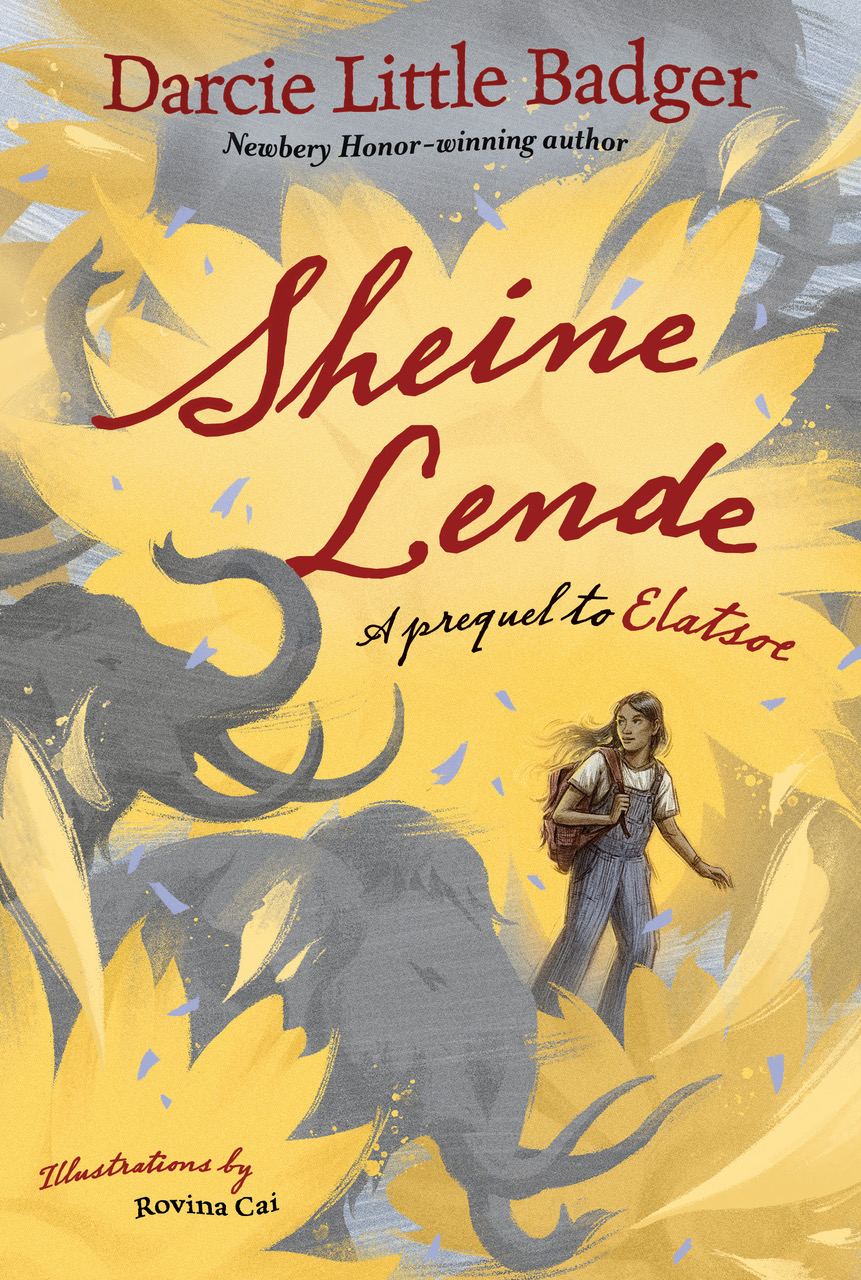 I love the way your America is so close to our "real" world, but there is also--in your words--"powerful magics." Why did you choose to have a world so close to our own, but with magic?
I love the way your America is so close to our "real" world, but there is also--in your words--"powerful magics." Why did you choose to have a world so close to our own, but with magic?
As a genre writer, I appreciate that fantasy enables me to explore and process the human condition and real-world events with tools of pure imagination. For example, in Sheine Lende, the mimic fairy rings behave like invasive plant species, whose impacts I studied in college. And I'm able to make their environmental and social damage very clear by giving them these chaotic teleportation powers, which sap the organic life from the soil.
Ghosts, especially ghost animals, play an outsize role in Sheine Lende (and Elatsoe). Can you explain why?
I've always enjoyed a good ghost yarn; blame my formative years reading Goosebumps and Scary Stories to Tell in the Dark. When I was a teenager, I wrote a short story about a haunted house. Three kids investigated the place and learned that the ghost of a parrot was trapped within its attic. They freed the poor critter by opening the door of its birdcage, long forgotten among other abandoned junk. The ghost parrot could speak (a few phrases) and cause gusts of wind. I wondered: What supernatural powers would other species have? Could a ghost dog do amazing tricks?
But in Sheine Lende (and Elatsoe), ghosts have a symbolic role, too. Growing up I never learned about my people in school, despite our major role in Texas history. And the first time I read the word "Lipan Apache" in a book, it claimed we were all dead. I thought to myself: What does that make me? My community, culture, and family were vibrant and present in my life, yet the world treated us like we'd gone extinct. It kinda felt like I was a ghost, and human ghosts are terrible, unnatural things. They have no home. They are nothing but pain.
This is the despair Sheine Lende wrestles with, thematically.
My novels make it clear: we are still here.
How much are you present in your characters?
Honestly, not much. I'd probably get bored--it's too much fun to put myself in the heads of different people (or even species!) and engineer their adventures. That said, there's sometimes an element of wish fulfillment to my writing. For example, Shane is calm and proactive in crisis situations. Am I? Errrrm. Depends on the crisis, but I doubt I'd survive an attack by a prehistoric lion. I wish I had Shane's survival skills, though.
What do you hope readers will take away from Sheine Lende?
Above all, I hope the story will connect with readers and be an enjoyable read. If it also inspires them to fight through their own difficulties, whatever they may be, that'd be wonderful.
What are you working on now? Can readers hope for another book in this world?
I can definitely see a third book in the Elatsoeverse--maybe this one can span many generations! Ellie, Shane, and Six-Great all part of the same overarching plot? Right now, I'm working on a couple other projects (for middle-grade readers and adult readers), and my fourth YA book will be a standalone about cousins and the winged harbinger of doom.
Is there anything else you'd like readers to know?
Guinea pigs are born with their eyes open and ready to run. --Lynn Becker, reviewer, blogger, and children’s book author
Book Candy
Book Candy
Comptroller and niche, for example. Mental Floss highlighted "10 common words you're probably mispronouncing."
---
Megan Campisi explored "the wild tales of Allan Pinkerton" for CrimeReads.
---
From 1959, Flannery O'Connor reads "A Good Man Is Hard to Find," via Open Culture.
Off with Their Heads
by Zoe Hana Mikuta
Zoe Hana Mikuta's Off with Their Heads realizes the phrase "We're all mad here" in such memorably gruesome ways that Lewis Carroll and his Cheshire Cat would be astounded. In this mesmerizing YA fantasy horror reimagining of Alice's Adventures in Wonderland from the author of the Gearbreakers series, two brave and broken young witches fight monsters and each other. Mikuta infuses her lush, bloody, anarchic lovers-to-enemies vision of the classic children's novel with elements of Korean culture and visceral magic for a strikingly filmic reading experience.
White Queen Delcorta October Kkul made a game of pitting human criminals against Saints, magical heroes who have transformed into grotesque monsters that feed on human emotion. No matter who survived the contest, the queen always slayed the Saints. When Iccadora Alice Sickle and Carousel Rabbit were 16, Saint Kat Pillar slipped her captors and escaped the Queen's deadly "Saints' Races." The girls, madly in love with each other, nearly died in their brush with the Saint, who wound up in their village, and were unable to help their close friend Tecca, whom Kat brutally killed. The magical stain of Tecca's death tainted the girls, forcing them to become Jabberwockies, prisoners sentenced to Wonderland Forest, a place where feral Saints roam largely unchecked. Icca, who can control darkness (darkporting), and Caro, who can control crows, combined their powers to survive and hunt the monsters in the woods. They were sustained by a love that "pricked and stung... they were already such barbed girls. Such bramble-wrought souls."
The girls grew strong in their power and wild magic leaked as fluid from their eyes, noses, and mouths, blue for Caro and silver for Icca. Together, they worked toward the only thing that could end their banishment: presenting four Saints' heads to the Queen. Eventually, both girls paid their debt and reentered society, but a mutual betrayal left them unable to walk out of Wonderland together, unable to be anything resembling together ever again. "What do you get when you have two witches with violent tendencies in love, and you take away the love?... You get two witches with violent tendencies."
Five years later, Icca and Caro are madly in hate. Icca lives to take the heads of Saints, and plot her vengeance against the crown for Tecca's death and her own imprisonment. The White Queen has died, but in her place reigns her perilous daughter Hattie November Kkul, the Red Queen. Hattie's crimson magic flows from her body constantly, leaving her unable to wear any color but red because of the stains. Rumor has it Hattie murdered her mother, though no one could prove her guilt at the time. She keeps an entourage of absolved Jabberwockies called the Culled Court, in which Caro now serves her as devotedly as Icca despises her. Hattie has "reformed" the Saints' Races to no longer include humans: instead, she creates her own custom monsters by magically stitching Saints together, then pitting the results against non-augmented Saints in public matches. "Hattie [is] cruel, and insane, and she [makes] a joke of this world," but she's also powerful beyond question. Caro regards her with awe, "and Caro liked being in awe. It kept the boredom fastened back."
This year's Saints' Races approach, and Icca's determination to put an end to the Kkuls puts her on a collision course with Caro. As the ex-lovers lose their heads over their animosity, the Red Queen waits in the wings with a sinister plan for the deadly and damaged heroines.
Mikuta weaves a dark and tangled spell of soul-rending pain and terrible yearning that grafts to the source material with ease, translating iconic characters through the lexicon of her vicious world. Here the Cheshire Cat becomes a beautiful gossip of a young man, while the Caterpillar is a nightmarish creature who spins its nest from human bodies. The plot and relationship trajectories follow the model of the Caucus Race, none of the participants able to win but none of them able to stop running. Like Alice, Icca follows her White (Carousel) Rabbit into places where only madness and pain wait for her, knowing that being "good wouldn't keep her alive. It would barely keep her entertained." The author trusts her audience to ride the waves of surreal logic in her ambitious creation, never over-simplifying the mad world. Her prose rings vibrant in its descriptions and luxurious in its emotionality as readers follow Icca and Caro through chapters that alternate between the aching tragedies of their adolescence and their reunion as spiteful, vitriolic young adults. Lines blur between love and hate as well as genius and madness in a story that suggests true danger comes not from the threat of monsters, but from the vulnerability of the human heart. Teen readers looking for a fresh, deep take on magic, an unabashedly angst-filled breakup play-by-play, or a darkly irreverent rendering of a childhood classic should not hesitate to leap down the rabbit hole into this epic journey, told in Mikuta's velvet-and-razors prose. --Jaclyn Fulwood
Stitching Together Monsters
An Interview With Zoe Hana Mikuta
 |
|
| (photo: Khanh Dinh) | |
Zoe Hana Mikuta is a Korean American YA author, currently attending the University of Washington in Seattle. She is the author of the YA sapphic mecha sci-fi novels Gearbreakers and Godslayers. When she is not writing, Mikuta can be found embroidering runes on her jeans pockets or curled up with a cup of caramel coffee and a bloody but heartwarming book. She recently spoke with Shelf Awareness about Off with Their Heads (out now from Disney Hyperion)--a YA fantasy horror reimagining of Alice in Wonderland--genius versus madness, and building an eclectic body of work.
What differences and common elements should fans of your mecha duology expect to find in this new story?
Besides the general genre shift, I would say Off with Their Heads lacks the overall softness of the Gearbreakers duology but, at the same time, is told with a more whimsical tone by a classic fairytale narrator who's a bit of a sadist. Though I've written a sapphic romantic subplot again, it's far from being lovey-dovey like my mecha duology. Honestly, you'll find no heroes in Off with Their Heads. Everyone is being generally terrible all the time. Common elements include angry girls.
This book is a whirlwind of timeline shifts, magic, elements of classic fiction, and horror. The word "ambitious" barely touches it as a descriptor.
I was definitely trying out a new writing style in Off with Their Heads, and I had a lot of fun working with such a lighthearted tone even as horrible, horrible things were going on. My editor has called it my Wonderland prose.
This book was also my quarantine project--for months and months it was just me and Caro and Icca and Hattie. I think having that solitude helped to get it all out. The majority of the challenge was, frankly, getting over myself. I wanted to do the story I had in my head justice, but because Off with Their Heads isn't my debut, I felt a lot of self-pressure to show my growth as a writer. It totally terrified me that, as the manuscript got longer and longer, it was all going to fall apart, and because I want to do stories as multilayered as this one in the future, it'd mean The End.
But it's done!
I'm gravitating toward having a career of eclectic books; I want them all to be distinctly different, because I want to try out myriad writing styles and genres. With Off with Their Heads, the first book I've done in the fantasy genre, I discovered this "vision" I have of my career will definitely involve going outside my comfort zone.
How did you get from Alice in Wonderland to Off with Their Heads?
I've been enamored with Alice in Wonderland for a while now, and have a soft spot for its horror retellings especially. The story is so versatile for that genre, just from its sheer strangeness and how sanity isn't necessarily a given.
To start, I had a copy of Alice in Wonderland that I annotated with my Off with Their Heads darlings in mind. This was pretty much the only part of the drafting that was in any way organizational. I'm really not someone who writes from a synopsis. I don't know the ending until I get there! I had some structuring scenes in mind--the entering of Wonderland, the mad tea party, the trial--and the relationships between the characters, and then I had to see what I'd end up writing in between. Bless my editor.
Your Red Queen Hattie November Kkul walks the line between artistry and madness.
The line between artistry and madness gets blurred with the onset of obsession. Those elements come together under the umbrella of the "obsessed artist" character trope. I loved playing with this trope. There's such a satisfying contrast between its connotations of creation and deterioration. Over the course of Off with Their Heads, Hattie certainly begins to lose herself in her art of stitching together monsters, even with her initial motivation being to use the medium for self-reflection and self-discovery. I'm hoping her character arc will unsettle readers and strike a chord with the artistic ones, especially as Hattie doesn't mind that she's losing herself if it's all for the glory of her art.
What drew you to write an inside-out love story with a lovers-to-enemies twist?
I haven't seen a ton of sapphic lovers-to-enemies character arcs, and I feel like most of what's on the market for sapphic romance right now is generally on the softer side, my debut included. I asked myself, cackling and having a grand time writing Caro and Icca's disaster of a relationship, "Where's the representation for the sapphics that might be absolutely horrible people?" I wanted to write two girls who were off their respective rockers but also quite enamored with the horrible world around them. Carousel is definitely the bubblier of the two, while Icca is the classic, bleak, "chip on her shoulder" character, but I wanted to make them complement each other through their shared obsession with strangeness. I wanted to make them so weird that the reader couldn't help but dote on them a little.
How do you feed your creativity?
I read a lot, and I have a lot of tea, and pretend they're magic potions that will solve all my plot holes. I have to accept that my creativity comes in waves. The best thing I can do to feed it is be patient. It is definitely blocked when I try to force it. "Write without fear; edit without mercy," is the eternal, internal chant to keep from scaring the creativity off.
In a world where writers are often advised to write to the reader's expectations or genre standards, how do you find the self-assurance to take big swings?
My editor, Rebecca [Kuss], and literary agent, Laura [Rennert], are constantly encouraging me to write as weird as I want and to take risks. Having that creative freedom has been everything. As for self-assurance, the thought that I'm writing something strange and entertaining pushes me forward. I think for a while, when people heard "YA" they thought of a certain specific writing style, cleaner-cut and easily digestible. I see so many writers now who stand out because of their unique voices, even if their work might not have been "sellable" 10 years ago. It absolutely lights me up when I see YA prose that goes off the beaten path. Some authors that come to mind are Andrew Joseph White and Joan He.
What strange beauty should we expect from you next?
My next book is another YA fantasy horror, and it's going to be bleaker than Off with Their Heads. A quick teaser: in a world where witchcraft has the nasty side effect of psychological erosion, a coven comes together to find a cure for magic. They're certain it's waiting for them just on the other side. Or maybe they're just addicted to the cozy slew of death and resurrections. Or maybe to each other. --Jaclyn Fulwood
Rediscover
Rediscover: Daniel C. Dennett
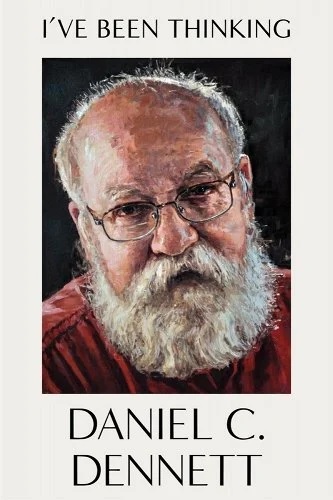 Daniel C. Dennett, "one of the most widely read and debated American philosophers, whose prolific works explored consciousness, free will, religion and evolutionary biology," died April 19 at age 82, the New York Times reported. "Dennett combined a wide range of knowledge with an easy, often playful writing style to reach a lay public, avoiding the impenetrable concepts and turgid prose of many other contemporary philosophers." In addition to his more than 20 books and numerous essays, his writings were adapted for the theater and the concert stage.
Daniel C. Dennett, "one of the most widely read and debated American philosophers, whose prolific works explored consciousness, free will, religion and evolutionary biology," died April 19 at age 82, the New York Times reported. "Dennett combined a wide range of knowledge with an easy, often playful writing style to reach a lay public, avoiding the impenetrable concepts and turgid prose of many other contemporary philosophers." In addition to his more than 20 books and numerous essays, his writings were adapted for the theater and the concert stage.
Dennett earned a Ph.D. in philosophy from Oxford University with a dissertation that began a lifelong quest to use empirical research as the basis of a philosophy of the mind. He taught philosophy at the University of California, Irvine, from 1965 to 1971, then moved to Tufts University, where he was director of its Center for Cognitive Studies.
He attracted widespread scholarly notice with his first book, Brainstorms: Philosophical Essays on Mind and Psychology (1978), in which he asserted that "multiple decisions resulted in a moral choice and that these prior, random deliberations contributed more to the way an individual acted than did the ultimate moral decision itself," the Times noted.
Although he claimed free will--like consciousness--was based on the outdated notion that the mind should be considered separate from the physical brain, he still asserted that free will was a necessary illusion to maintain a stable, functioning society. "We couldn't live the way we do without it," he wrote in From Bacteria to Bach and Back: The Evolution of Minds (2017).
Dennett's other works include Consciousness Explained (1991), Darwin's Dangerous Idea (1995), Kinds of Minds: Toward an Understanding of Consciousness (1996), Breaking the Spell: Religion as a Natural Phenomenon (2006), and Intuition Pumps and Other Tools for Thinking (2013).
Never one to avoid controversy, Dennett often crossed swords with other scholars and thinkers. An outspoken atheist, he claimed that the human mind is no more than a brain operating as a series of algorithmic functions, like a computer. To believe otherwise is "profoundly naïve and anti-scientific," he told the Times.
A series of interviews with clergy from Caught in the Pulpit: Leaving Belief Behind (2013) by Dennett and colleague Linda LaScola became the basis of Marin Gazzaniga's play The Unbelieving, which was staged Off Broadway in 2022. Eight years earlier, Dennett's views on evolutionary biology and religion were the subject of Mind Out of Matter, a 75-minute-long musical composition by Scott Johnson performed in a seven-part concert at a theater in Montclair, N.J.
"I'm a robot, and you're a robot, but that doesn't make us any less dignified or wonderful or lovable or responsible for our actions," Dennett observed. "Why does our dignity depend on our being scientifically inexplicable?'' Dennett's 2023 memoir, I've Been Thinking, is available from W.W. Norton.


